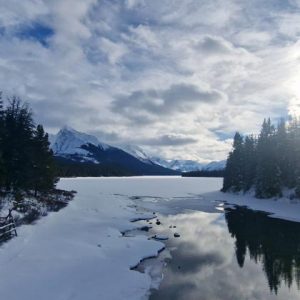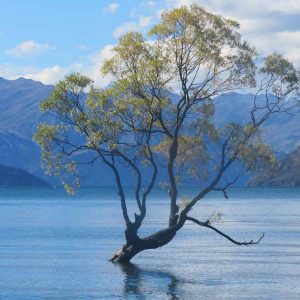Tales of the unexpected
Never pre-judge a walk by its length alone – and don’t take the American definition of a cottage at face value. In different ways our two days in Lubec, on the far northeast cost of Maine, proved both rules.
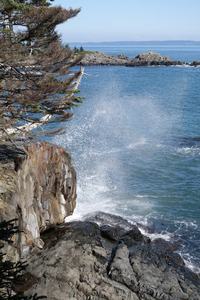 The route around West Quoddy Head measured a mere five miles. As e set off on a path well surfaced enough for wheelchairs I wondered why I’d even bothered to wear hiking boots. Trainers would have done. The diversionary wooden walkway around a peat bog maintained the illusion. The interpretation boards, explaining the bog’s 8000 years of evolution, the composition of peat (90% moisture to 10% organic matter) and plant life from cranberry to dwarf trees, were interesting enough to allay the sense of a workout frustrated.
The route around West Quoddy Head measured a mere five miles. As e set off on a path well surfaced enough for wheelchairs I wondered why I’d even bothered to wear hiking boots. Trainers would have done. The diversionary wooden walkway around a peat bog maintained the illusion. The interpretation boards, explaining the bog’s 8000 years of evolution, the composition of peat (90% moisture to 10% organic matter) and plant life from cranberry to dwarf trees, were interesting enough to allay the sense of a workout frustrated.
How wrong we were to leap to such conclusions. A gentle descent brought us to the south coast of the peninsula, where the route turned back to our starting point. And suddenly soft turned tough. The path became an awkward switchback between little coves. There were splendid views of the cliffs of Grand Manan island, rising between 200 and 400 feet, some ten miles to the south-east. Grand Manan is in Canada. The further east we walked, the more thunderous the waves, breaking in clouds of spray on the rocky shore below us The waters off the headland are part of the open end of the Bay of Fundy, which separates New Brunswick from Nova Scotia. The shape of the bay causes huge tides, rising and falling by an average of 15ft 8in in six hours. The ocean here is host to rich marine life. Shortly before the end we sighted two humpback whales. We finished with a stroll to the red and white painted lighthouse at the easternmost point in the USA and a feeling of relief that we had avoided the temptation to turn up our noses and abandon the walk before it revealed its delights.
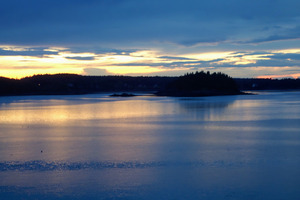 Well exercised, we drove the short distance back to the Inn on the Quay. I’d booked rooms at the Inn on line, with no prior advice. Risky, but you develop a nose for the acceptable. This was much more than just acceptable. The rooms we had booked, in a building on a low cliff, turned out to be huge, with wide decks to sit out on with a glass of wine as the sun set and stunning views of sea and islands. The front desk and restaurant were on the eponymous wharf, which also incorporates a former sardine factory. The restaurant served fresh fish from scallops to lobster, though you couldn’t help wondering what the likes of Rick Stein might have done with all the magnificent seafood landed right there.
Well exercised, we drove the short distance back to the Inn on the Quay. I’d booked rooms at the Inn on line, with no prior advice. Risky, but you develop a nose for the acceptable. This was much more than just acceptable. The rooms we had booked, in a building on a low cliff, turned out to be huge, with wide decks to sit out on with a glass of wine as the sun set and stunning views of sea and islands. The front desk and restaurant were on the eponymous wharf, which also incorporates a former sardine factory. The restaurant served fresh fish from scallops to lobster, though you couldn’t help wondering what the likes of Rick Stein might have done with all the magnificent seafood landed right there.
Despite the loss of the final k, Lubec, a start point for whale watching excursions, is named after its German counterpart on the Baltic coast. Apparently one of the town’s founders saw similarities between them. They were both trading ports, Lubeck as part of the Hanseatic League that lasted for some three centuris until 1535, Lubec through its commerce with Canada.
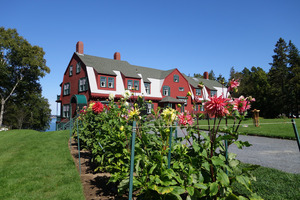 It was across the bridge to Canada – only a few minutes away – that we went to visit what is undoubtedly North America’s most famous cottage. We had become aware previously, when renting a spacious property on a Maine lake, that cottages here were unlike their British counterparts. Not that the name Campobello implied thatched and rose hung. More Palladian, I thought, before discovering that the name of Roosevelt family summer retreat derived from Campbell – Lord William, a former Governor or Nova Scotia.
It was across the bridge to Canada – only a few minutes away – that we went to visit what is undoubtedly North America’s most famous cottage. We had become aware previously, when renting a spacious property on a Maine lake, that cottages here were unlike their British counterparts. Not that the name Campobello implied thatched and rose hung. More Palladian, I thought, before discovering that the name of Roosevelt family summer retreat derived from Campbell – Lord William, a former Governor or Nova Scotia.
The ‘cottage’ – open to the public and with no admission charge – has 18 bedrooms. It was while staying there in 1921 that Franklln Delano Roosevelt was stricken with the polio whose devastating impact he defied with such extraordinary resoled to serve four terms as President and steer his country through the Great Depression and World War II.
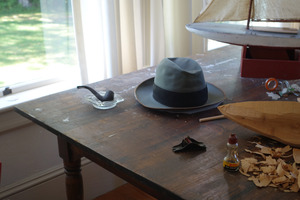 FDR didn’t get there often during his time in the Oval Office, not least because communications with the outside world barely existed. The island didn’t have electricity until the 1950s and even then his wife Eleanor didn’t want it.
FDR didn’t get there often during his time in the Oval Office, not least because communications with the outside world barely existed. The island didn’t have electricity until the 1950s and even then his wife Eleanor didn’t want it.
It’s an evocative place in the manner of Hemingway’s house on Key West, grand yet almost frugal in a way that encouraged an outdoor existence of golfing and sailing. FDR’s hat, on a desktop, catches the eye, as do a balsa wood model biplane in an children’a room and First World War sheet music on a piano. There’s a separate visitor centre where you may watch a sort film about FDR and his association with the island, and in the surrounding Roosevelt Campobello International Park there are seven marked walking trails. Though they’re all of modest length we didn’t have time to try them. But following the unexpected pleasures of West Quoddy Head, I wouldn’t dream of writing them off.


